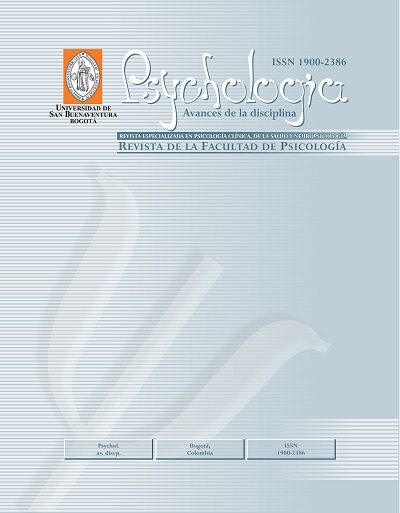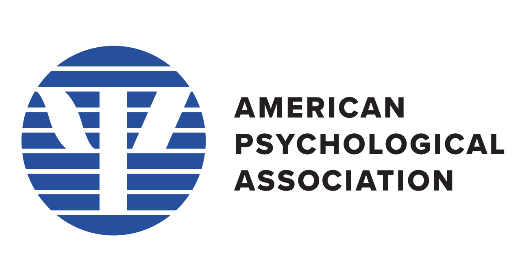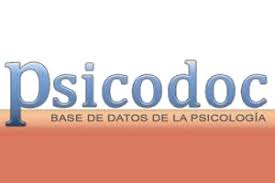This journal provides open, immediate access to its contents, based on the principle that offering the public free access to research helps to promote a higher global exchange of knowledge.
As such, all journal articles are published under a Creative Commons Attribution-NonCommercial-ShareAlike 4.0 International License (CC BY-NC-SA), by which commercial use of the original work or its possible derived works is not allowed, and the distribution thereof must be done with the same license elements regulating the original work.
http://creativecommons.org/licenses/by-nc-sa/4.0/
Abstract
This article presents two alternative indices for the evaluation and interpretation of crystallized abilities derived from the WISC-IV- Argentine version, the lexical knowledge index (Gc-VL) and the general information index (Gc-K0). To
this end, we worked with a sample of 1,036 cases. The confirmatory factor analysis revealed high indices that validated the new scores, and the reliability analysis was satisfactory. In turn, the results revealed correlations between the verbal comprehension index (VCI) of the WISC-IV and the new alternative indexes. Finally, differences were found in the Gc-VL and Gc-K0 scores, and the educational climate of the home. Although the WISC-IV proposes four composite indices and a global measurement of intelligence (VCI, RPI, WMI, PSI and QI), following the contributions of the Cattell-Horn-Carroll theory (CHC), it is recommended to implement these alternative scores in a normative and ipsative context that favor and enrich the study of the crystallized capacities of the examinee.
References
Arán Filippetti, V. (2012). Estrato socioeconómico y habilidades cognitivas en niños escolarizados: variables predictoras y mediadoras. Psykhe (Santiago), 21 (1). 3-30. DOI: doi.org/10.4067/S0718-22282012000100001
Bates, T., Hansell, N., Martinb, N. & Wright, M. (2016).When does socioeconomic status (SES) moderate the heritability of IQ? No evidence for g × SES interaction for IQ in a representative sample of 1176 Australian adolescent twin pairs. Intelligence, 56 (10-15). DOI: doi.org/10.1016/j.intell.2016.02.003
Brenlla, M. E. (2013). Interpretación del WISC-IV: puntuaciones compuestas y modelos CHC. Ciencias Psicológicas, 7 (2). 183-197. DOI: doi.org/10.22235/cp.v7i1
Carroll, J. B. (1993). Human cognitive abilities: A survey of factor-analytic studies. Cambridge: Cambridge University Press.
Cattell, R. B. (1963). Theory of fluid and crystallized intelligence: A critical experiment. Journal of Educational Psychology, 54 (1). 1-22. DOI: http://dx.doi.org/10.1037/h0046743
Cerqueiro, F.F. (2013). Actividades lúdicas de repaso y su función motivadora en lenguas para fines específicos. Encuentro 22, 38-52. Recuperado de: http://encuentrojournal.org/textcit.php?textdisplay=456
Flanagan, D. P. & Kaufman, A. (2006). Claves para la evaluación con el WISC-IV. Madrid: TEA Ediciones.
Flanagan, D. P., & McGrew, K. S. (1997). A cross-battery approach to assessing and interpreting cognitive abilities: Narrowing the gap between practice and cognitive science. En D. P. Flanagan, J. L. Genshaft, & P. L. Harrison (Eds.), Contemporary intellectual assessment: Theories, tests, and issues (pp. 314–325). Nueva York: Guilford Press.
Flanagan, D. P., & Dixon, S. G. (2013). The Cattell–Horn–Carroll Theory of cognitive abilities. En C. R. Reynolds, K. J. Vannest, & E. Fletcher-Janzen (Eds.), Encyclopedia of Special Education (pp. 368–382). Hoboken, NJ: John Wiley & Sons.
Flanagan, D. P., McGrew, K. S. & Ortiz, S. (2000). The Wechsler Intelligence Scales and Gf-Gc Theory: A Contemporary Approach to Interpretation. Estados Unidos: Allyn & Bacon
Grégoire, J. (2009). L'examen clinique de l'intelligence de l'enfant: Fondements et pratique du WISC-IV (2º Ed.). Sprimont: Mardaga.
Horn, J. L. & Noll, J. (1997). Human cognitive capabilities: Gf-Gc theory. En D. P. Flanagan, J. L. Gensaft, & P. L. Harrison (Eds.). Contemporary intellectual assessment: Theories, tests, and issues (pp. 53-91). Nueva York: Guilford Press.
Horn, J. L. (1991). Measurement of intellectual capabilities: A review of theory. En K. S. McGrew, J. K. Werder & R. W. Woodcock (Eds.), Woodcock-Johnson technical manual (pp. 197-232). Itasca, IL: Riverside.
Hunt, E. B. (2000). Let's hear it for crystallized intelligence. Learning and Individual Differences, 12 (1), 123–130.
Keith, T. Z. & Reynolds, M. R. (2010). Cattell–Horn–Carroll abilities and cognitive tests: what we´ve learned from 20 years of research. Psychology in the Schools, 47 (7). 635 – 650. DOI: 10.1002/pits.20496
Keith, T. Z., Fine, J.G., Taub, G., Reynolds, M.R., & Kranzler, J.H. (2006). Higher Order, Multisample, Confirmatory Factor Analysis of the Weschler Intelligence Scale for Children-Fourth Edition: What does It Measure? School Psychology Review, 35 (1), 108 - 127. Recuperado de: https://scholars.opb.msu.edu/en/publications/higher-order-multisample-confirmatory-factor-analysis-of-the-wech-3
Mascolo, J. T., Flanagan, D. P. & Alfonso, V. C. (2014). Essentials of Planning, Selecting, and Tailoring Interventions for Unique Learners (Essentials of Psychological Assessment). Nueva York: Guilford Press.
McGrew. K.S. (2009). CHC theory and the human cognitive abilities project: Standing on the shoulders of the giants of psychometric intelligence research. Intelligence 37 (1). 1 – 10. DOI: 10.1016/j.intell.2008.08.004
Muñoz-Sandoval, A. F., Woodcock, R. W., McGrew, K. S., & Mather, N. (2005). Batería III Woodcock-Muñoz. Itasca, IL: Riverside Publishing.
Plucker, J. A., Esping, A., Kaufman, J.C. & Avitia, M.J. (2015). Creativity and Intelligence. En S. Goldstein, D. Princiotta & J. Naglieri, (Eds.), Handbook of Intelligence: Evolutionary Theory, Historical Perspective, and Current Concepts. (pp. 283-291). Nueva York: Springer.
Reynolds, M.R. & Turek, J.J. (2012). A dynamic developmental link between verbal comprehension-knowledge (Gc) and reading comprehension: Verbal comprehension knowledge drives positive change in reading comprehension. Journal of School Psychology, 50 (841–863). DOI: 10.1016/j.jsp.2012.07.002
Rosemberg, C. & Stein, A. (2015). Guía 2: juegos con palabras y conceptos para promover el aprendizaje del vocabulario. Ciudad Autónoma de Buenos Aires: Organización de Estados Iberoamericanos para la Educación, la Ciencia y la Cultura. Alfabetización temprana en el Nivel Inicial. Recuperado de: https://www.unicef.org/argentina/spanish/EDUCACION_Guia_2_ALFABETIZACION.pdf
Schneider, W. J., & McGrew, K. S. (2012). The Cattell-Horn-Carroll model of intelligence. En D. Flanagan & P. Harrison (Eds.), Contemporary intellectual assessment: Theories, tests, and issues (3º Ed.) Nueva York: Guilford Press.
Schroeders, U., Schipolowski, S., Zettler, I., Golle, J., & Wilhelm, O. (2016). Do the smart get smarter? Development of fluid and crystallized intelligence in 3rd grade. Intelligence (Kidlington), 59. 84-95. DOI: 10.1016/j.intell.2016.08.003
Spearman, C. E. (1946). Theory of general factor. British Journal of Psychology, 36 (3). 117-131. DOI: 10.1111/j.2044-8295.1946.tb01114.x
Taborda, A., Barbenza, C. & Brenlla, M.E. (2011). Adaptación argentina del WISC-IV Wechsler. Escala de Inteligencia de Wechsler para niños cuarta edición (WISC-IV). Buenos Aires: Paidós.
Tacke, N., Bailey, L. & Clearfield, M. (2015). Socio-economic Status (SES) Affects Infants’ Selective Exploration. Infant and Child Development, 35 (1), 29-35. DOI: 10.1002/icd.1900
Tellegen, A., & Briggs, P. (1967). Old wine in new skins: Grouping Wechsler subtests into new scales. Journal of Consulting Psychology, 31 (5), 499-506. DOI: http://dx.doi.org/10.1037/h0024963
Zaval, L., Li, Y., Johnson, E. & Weber, E. (2015). Complementary Contributions of Fluid and Crystallized Intelligence to Decision Making Across the Life Span. En T.M Hess, C. J. Strough & C.E. Lockenhoff (Eds.), Aging and Decision-Making: Empirical and Applied Perspectives. (pp. 149-168). San Diego, CA: Elsevier Academic Press.





















